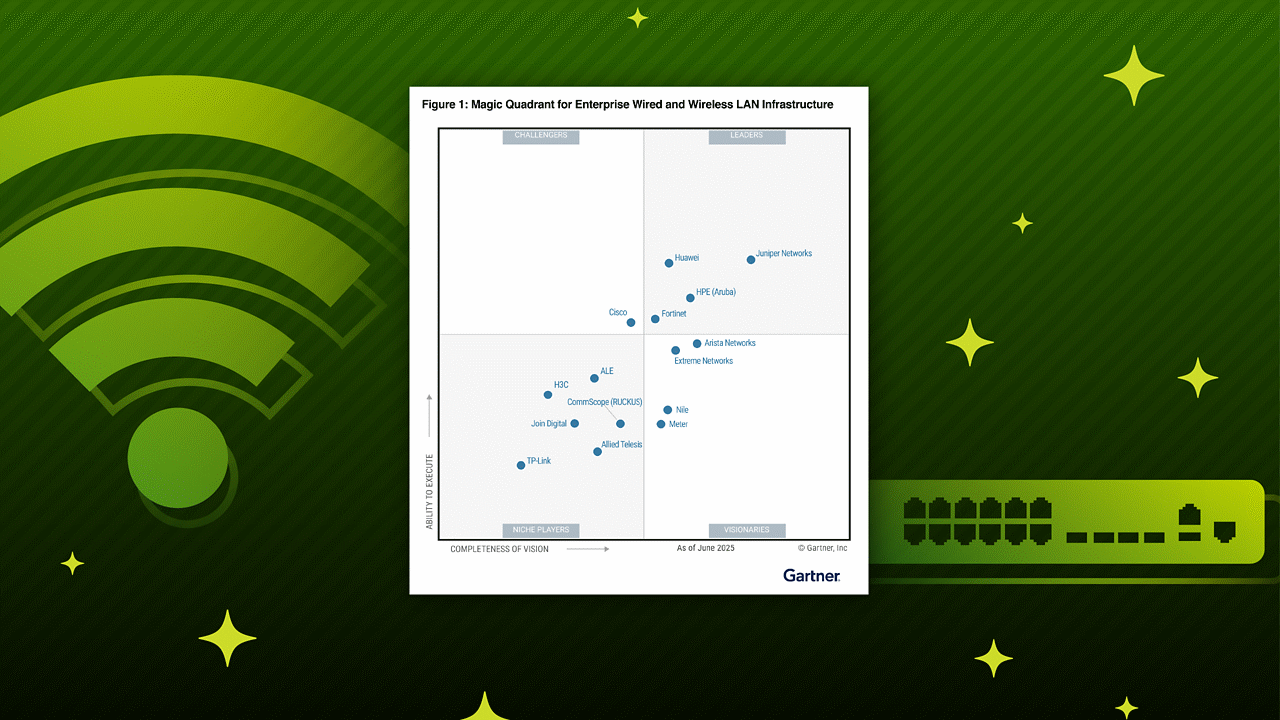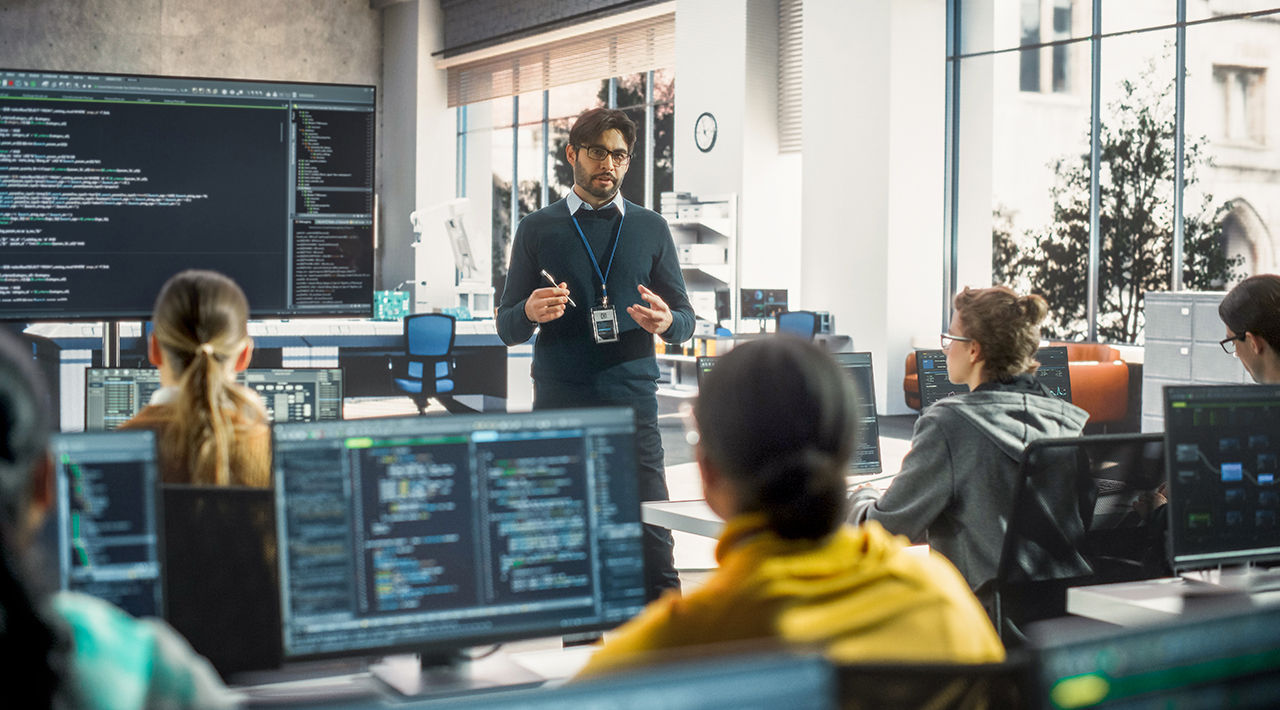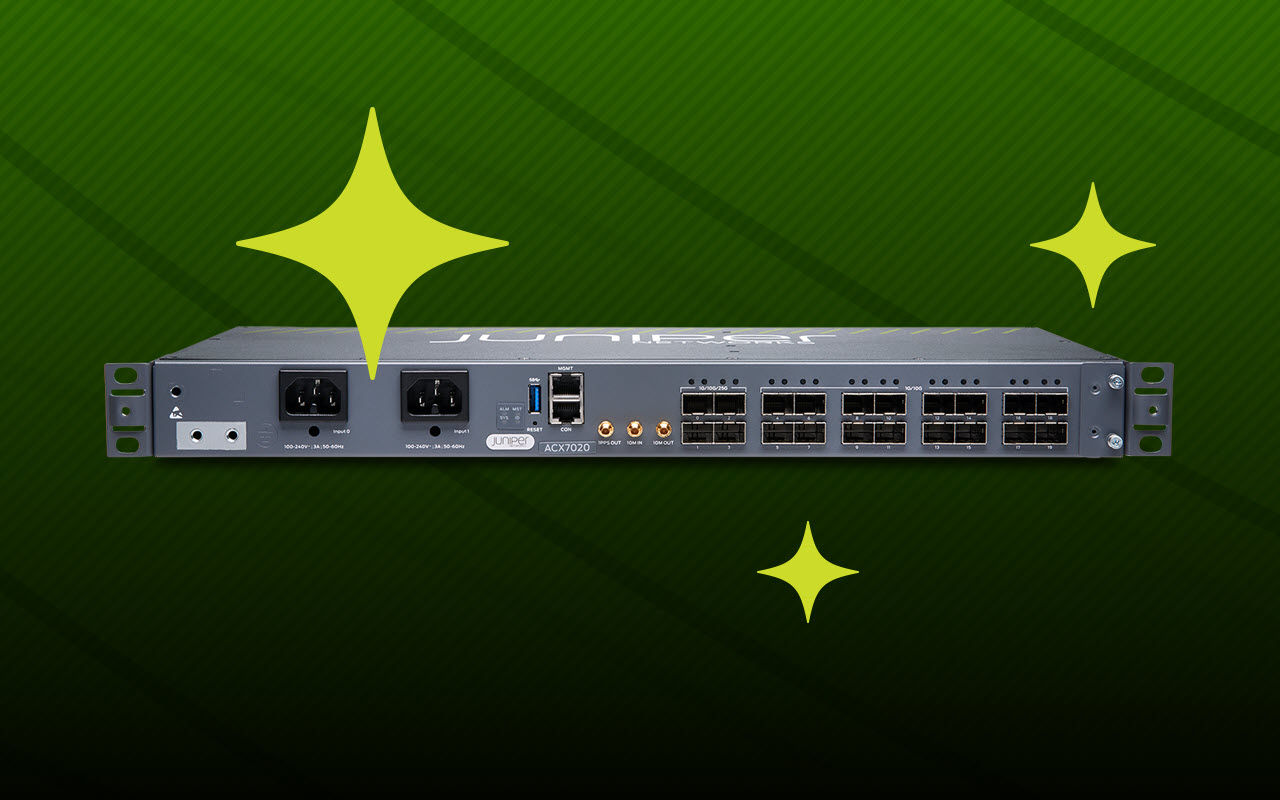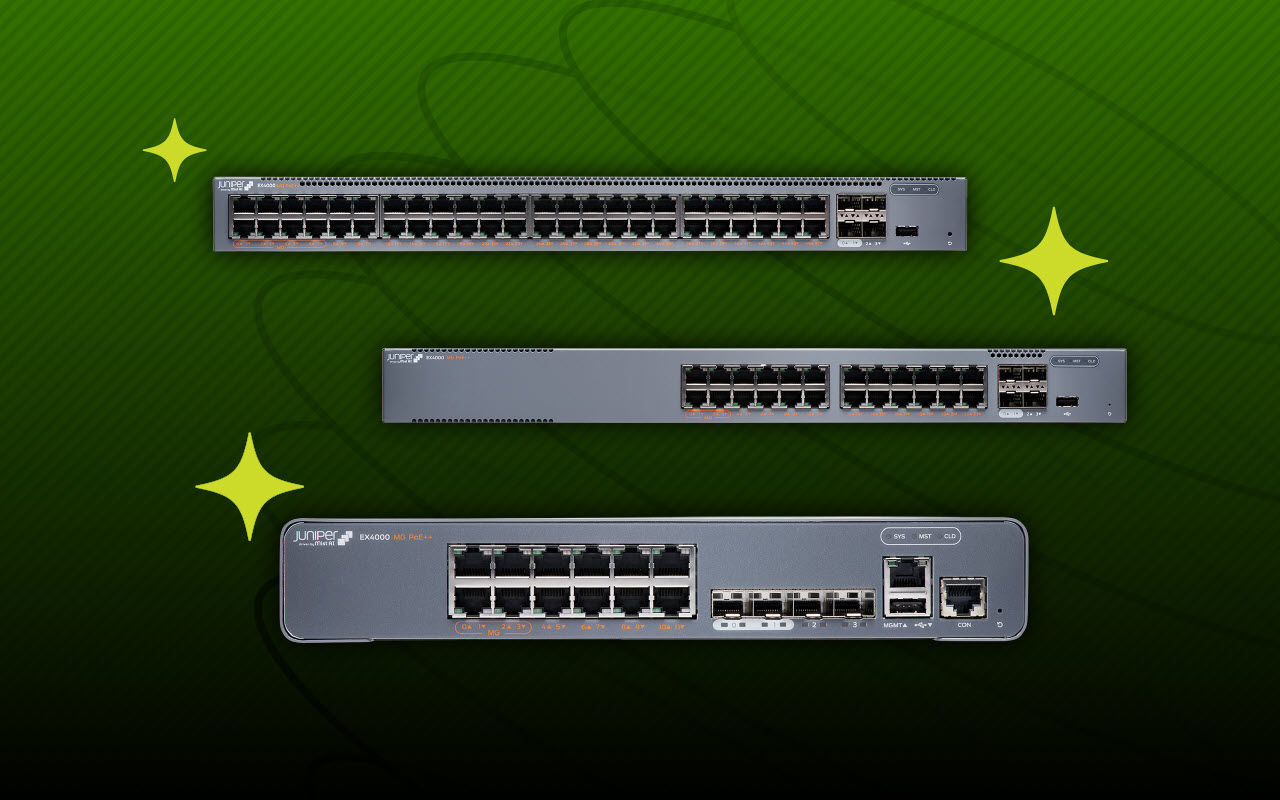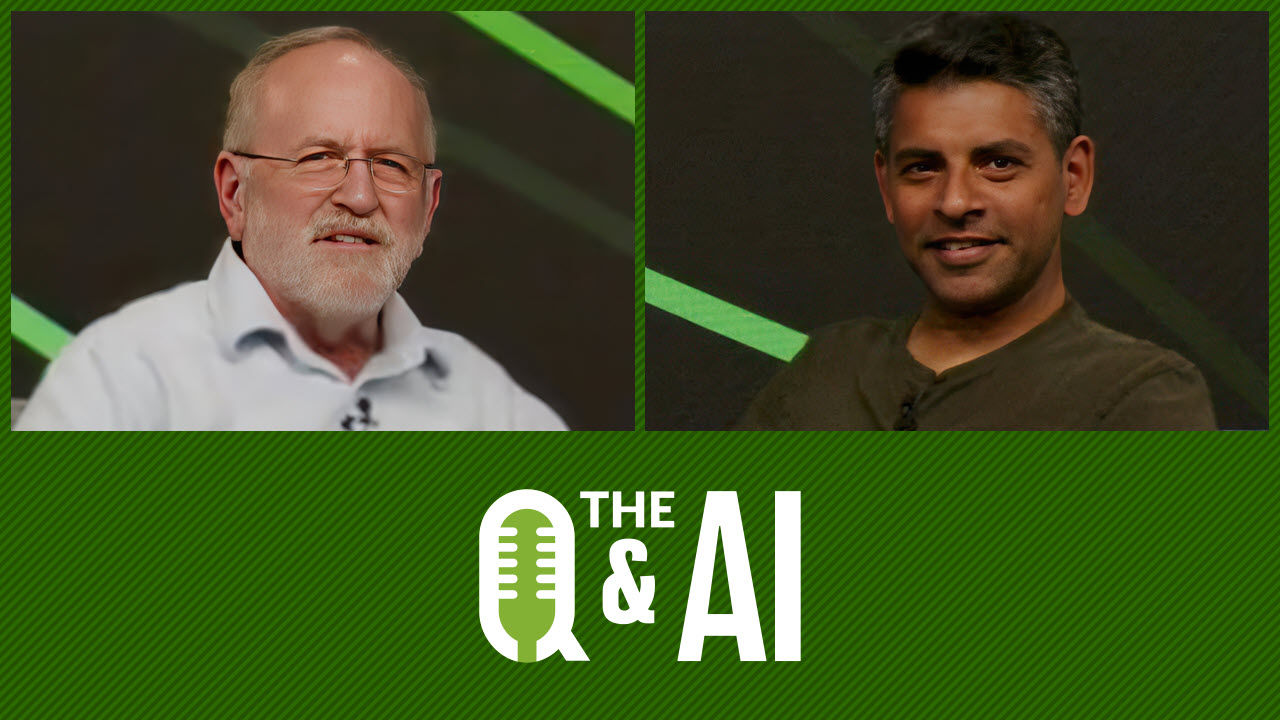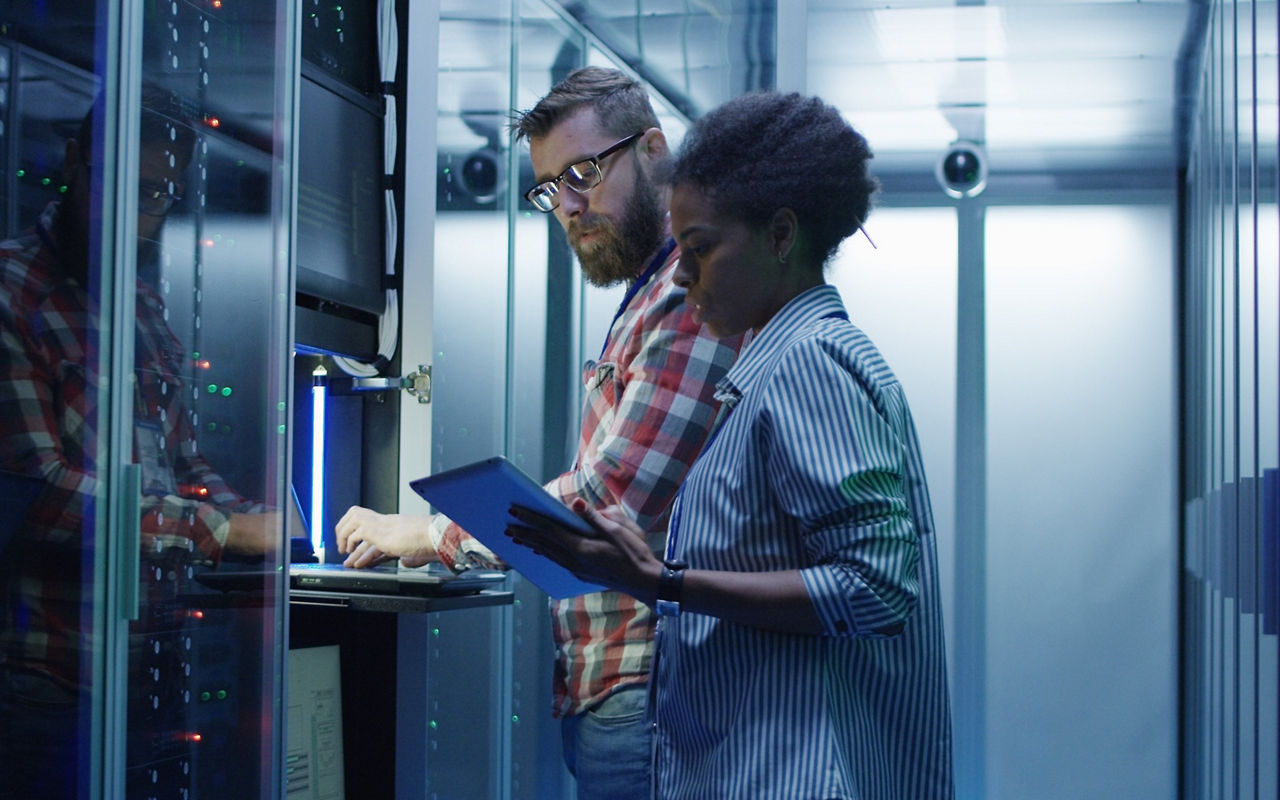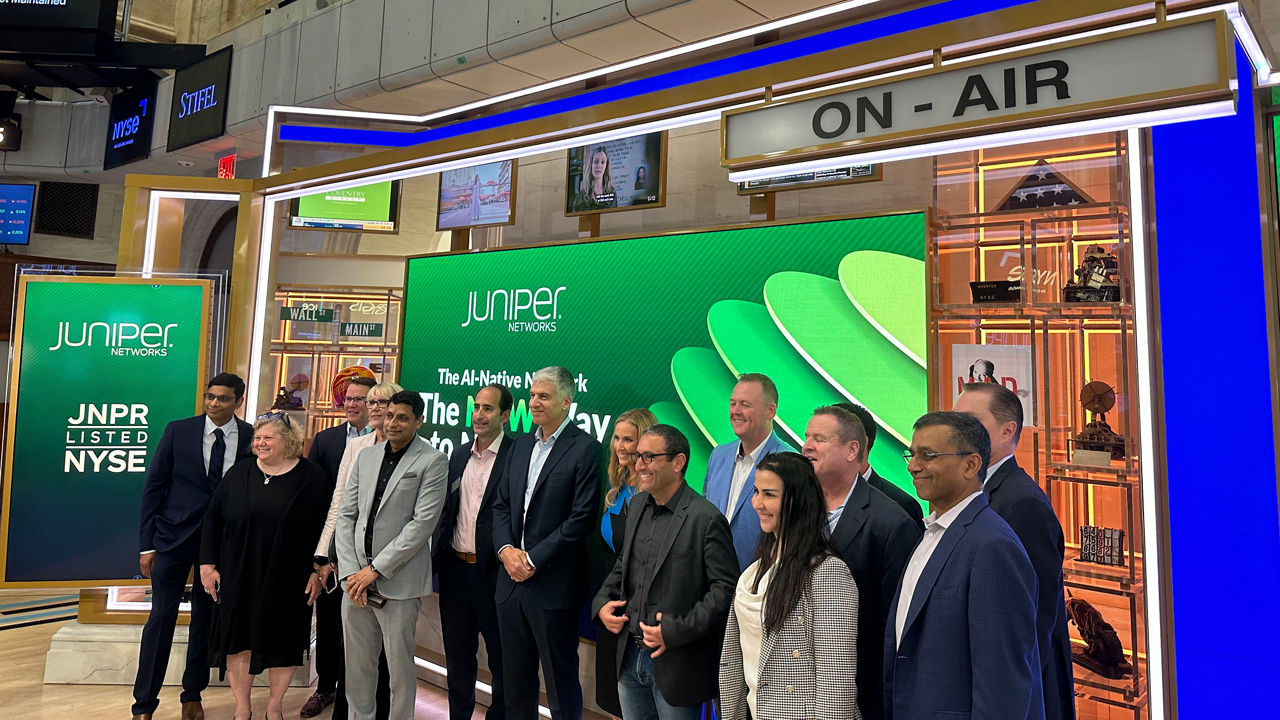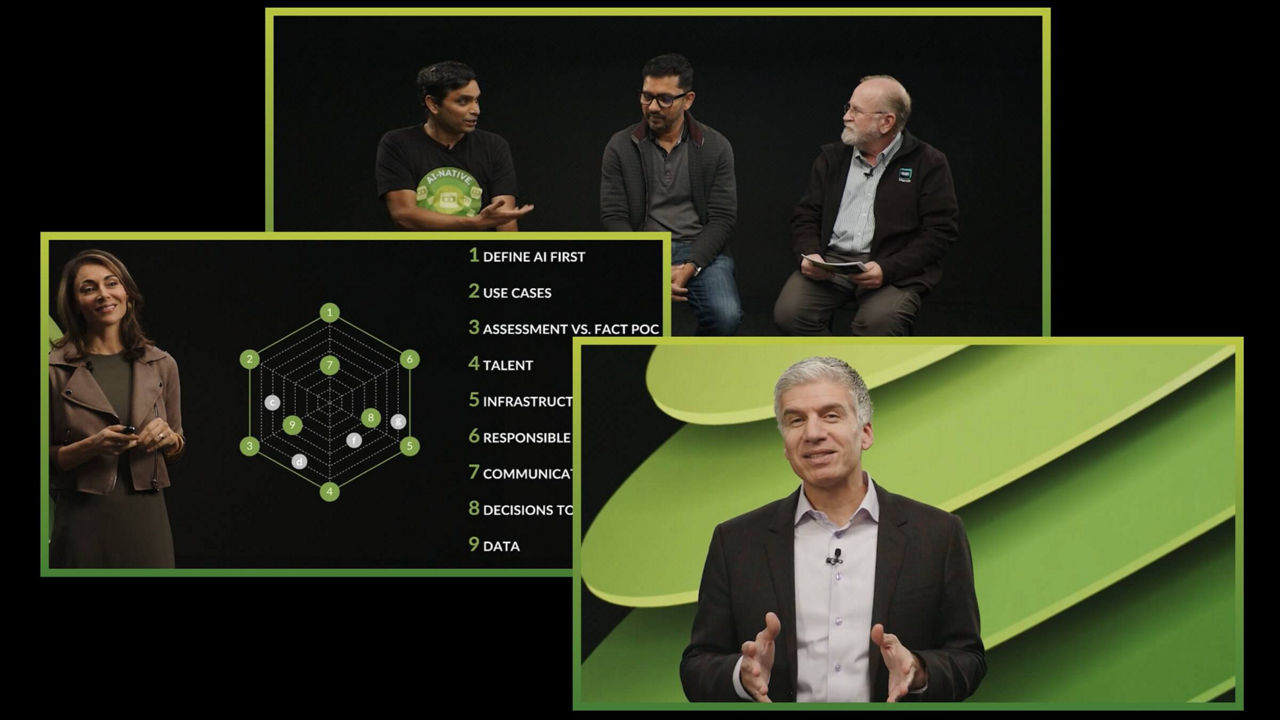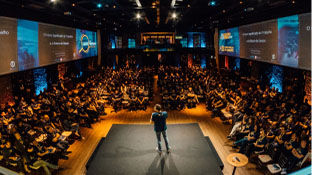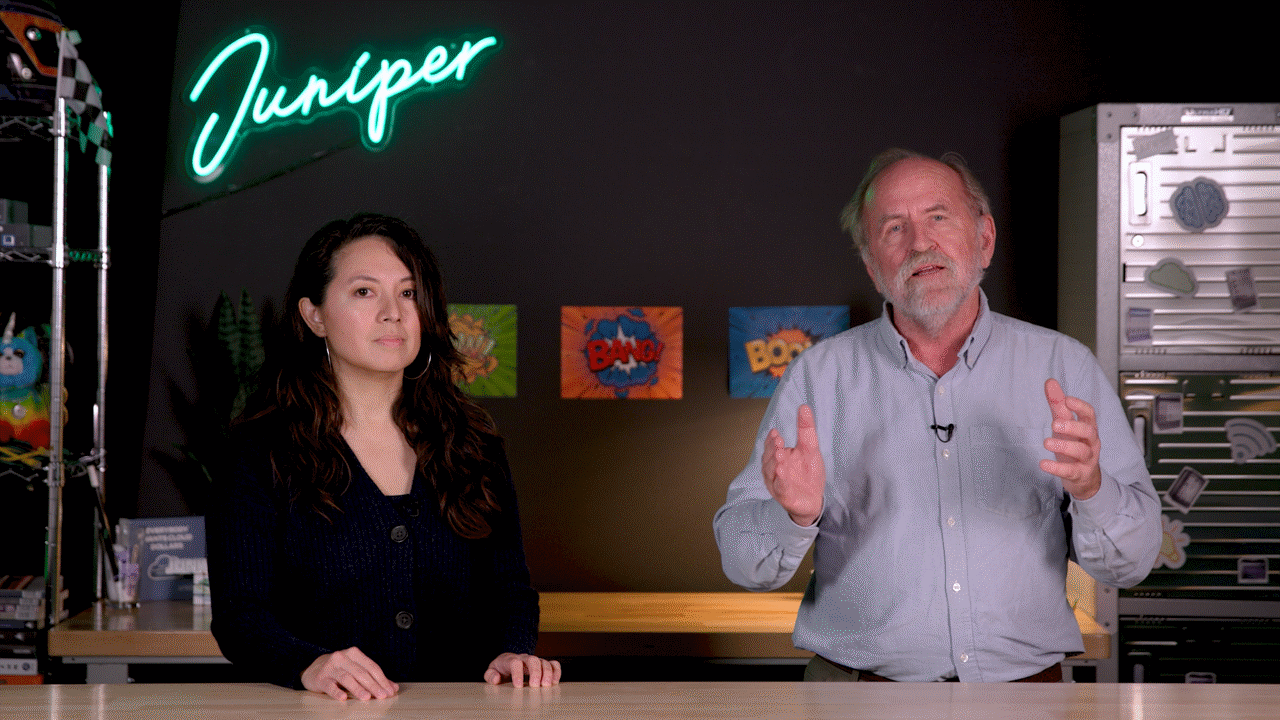University of Reading's AI-Driven Network Builds Digital Foundation to Enhance Student Experiences


See how one university upgraded its network with help from Juniper Networks.
University NetOps teams: Are you meeting the networking needs of today’s always-connected students, faculty, and staff? See how the University of Reading leverages Juniper Mist™ AI’s full suite of solutions to maintain a strong, reliable, AI-driven network that enhances the on-campus digital experience.
You’ll learn
How Juniper Mist is improving Wi-Fi connectivity across the University of Reading’s campus
Ways the university uses Juniper Mist AI location services to provide a deeper understanding of students’ experience and wellbeing
How Juniper Mist AI is helping the university be more financially and environmentally sustainable
Who is this for?
Host

Guest speakers

Experience More
Transcript
0:01 hi my name's Jamie pitchforth I'm head
0:03 of strategic business at Juniper here in
0:06 the UK today I'm in conversation with
0:08 Stuart Brown the chief digital officer
0:10 from the University of reading hi Stuart
0:12 hi Jamie so the proliferation of mobile
0:15 devices
0:17 digital technology in general has driven
0:19 a demand from students now where they're
0:22 always connected they're hunger for
0:24 network resources has never been as it
0:26 is today how are you coping with that
0:28 here in the University it's a massive
0:30 challenge Jamie uh so we we've always
0:32 known that the secret to that is to make
0:34 sure we've got a really really strong
0:36 reliable Network
0:38 so we took a view a couple of years ago
0:40 to make sure what's the number one thing
0:42 that they're really worried about and
0:43 that's Wi-Fi connectivity
0:45 so we we took the the view of should we
0:48 could we replace it with a light for
0:50 like solution or should we look at
0:52 something slightly different that gave
0:54 us some advantage over some of the other
0:56 uh competition out there for students to
0:59 come and come and study here we know we
1:02 need to get them connected as soon as as
1:04 we possibly can the minute they step
1:05 forth on campus and it's got to be the
1:08 most simple process you can possibly
1:10 imagine for them to do that and that's
1:13 the first impression they get at the
1:14 University so it's really important we
1:16 get that right no absolutely so one of
1:18 my favorite subjects the the selection
1:20 criteria
1:21 we came out on top you've chosen Juniper
1:24 Mist as your strategic technology really
1:27 for the next five to ten years what was
1:29 the process you undertook it was a
1:31 fairly straightforward process in so far
1:33 as we could either replace like for like
1:35 or we could replace with something that
1:39 was going to enable us to digitally
1:40 transform the like for like option is
1:43 always easier on a business case
1:45 but in this situation we had an
1:47 opportunity to really transform the
1:49 capability of Wi-Fi across the network
1:51 and we saw something new
1:55 and Innovative in the Juniper Miss
1:57 solution it wasn't also from a sales
1:59 pitch it was from my own team who spoke
2:02 to me and said look at this technology
2:05 can we do a proof of concept we need to
2:08 see if it a works but B does it actually
2:11 do what it says on the tin and so we ran
2:14 a proof of concept in our library using
2:16 Juniper mist
2:17 the good news was it works and as far as
2:19 the the executive board here are
2:21 concerned it has to work Wireless Wi-Fi
2:23 is the number one service we need to be
2:25 running properly
2:26 it worked and so all the other
2:29 value-added piece was was is an added
2:32 bonus to that to that decision making
2:35 and so
2:37 it was a very easy answer in the end to
2:39 choose Juniper mist and now students are
2:42 arriving with three four five six and
2:44 probably some even more devices the
2:47 ability for you guys is it to onboard
2:49 those devices as seemingly as possible
2:51 is is absolutely essential how's that
2:55 changed from an overhead on it you know
2:57 once upon a time you were having to
2:58 onboard all of those devices together
3:00 and now you provide that kind of
3:02 self-service where they could sit in the
3:04 home from home experience where they can
3:06 connect their own devices build their
3:08 own networks within your network
3:10 it's just a huge headache welcome week
3:13 would be an army of of people making
3:16 sure we've got students who snake around
3:18 the campus making sure they can connect
3:20 and it was a painful experience for both
3:22 the student and for us to try and
3:24 support them so now with self-service
3:26 and just getting up and running on our
3:28 regiroam Wi-Fi solution they can just do
3:31 that we've also got that in Halls of
3:34 residence as well so that they can just
3:35 connect via anything they want whether
3:37 it's their mobiles their Xboxes again we
3:40 couldn't support that in the past but
3:42 now they can do that fairly seamlessly
3:43 and certainly the campus experience
3:45 their first impression is really is much
3:48 improved the second point I think is
3:50 around
3:51 if there are any problems and of course
3:53 there will be some every now and then a
3:55 device might be too old their operating
3:57 system is a little bit old on their old
3:59 mobile device then we can look at that
4:01 really quickly now and see where the
4:03 issue is and we consider being the third
4:06 line guys the more the more experienced
4:08 guys and there's not many of them we can
4:10 throw that support to the first line
4:12 guys who can see that in real time what
4:15 the issues are and then advise that
4:16 student uh what action they can take to
4:19 get on on online so I know you invested
4:22 in a in a full Suite of uh of the missed
4:25 subscription so you have engagement
4:28 experience you have Marvis you have
4:31 location services and you have analytics
4:33 so a platform to really drive a digital
4:37 strategy on the subject specifically of
4:39 location services what are the key use
4:42 cases that you see within the university
4:44 for that technology so student
4:47 well-being is so important to us and
4:50 we've never really been able to see in
4:52 real time whether a student is suffering
4:55 a little bit with their studies falling
4:57 behind a little bit
4:58 in real time on a dashboard
5:01 using the technology we have with
5:03 location services in Juniper Mist we can
5:06 start to plump plug into those those
5:08 benefits we can start to see when a
5:10 student's attended a lecture or a
5:12 seminar we can see when they've been
5:13 through a return style in the library
5:15 and we can see as they've moved around
5:17 campus what type of clubs and societies
5:20 perhaps they might have signed up to you
5:22 get an overall view of that student and
5:24 that student's experience and well-being
5:26 and if there is anything that we need to
5:28 to be aware of in our student services
5:30 department because of that data then
5:33 those interactions can take place for a
5:36 positive outcome
5:37 so that the University's
5:39 vision for for students is is around
5:43 delivering excellent experience so
5:46 Technology Innovation and the network
5:48 architecture in general has has evolved
5:51 how are you now using the technology to
5:54 to Excel and deliver that great student
5:56 experience
5:58 so
5:59 of course the great student experience
6:01 is is just getting connectivity and
6:03 making sure that when they're hopping
6:04 from building to building they're not
6:06 losing that connectivity we've noticed
6:08 since since covid coming back to campus
6:11 everyone the demand on the network is
6:13 super high so it's really good that
6:16 we've got a network that's clever and it
6:18 can actually go out there and look and
6:20 load balance in a much better way than
6:21 we used to be able to do so when we have
6:23 got peaks in our library for study space
6:26 or during exam periods there is that
6:28 ability for that Network balance to be
6:30 going on using that I AI engine built
6:32 into into Marvis that's working really
6:35 well the other thing we're looking at
6:36 doing in terms of of footfall on campus
6:40 is actually for rather than I.T saying
6:43 look we've got this wonderful tool that
6:45 will enable you to do so much we've
6:47 actually got the business asking us
6:48 questions now so our Estates department
6:50 is asking us we really need to know what
6:54 the real-time occupation is of our
6:56 buildings are because we need to grow
6:58 and we haven't got the the capital
7:00 necessary to build new buildings on this
7:02 great campus so we need to use what
7:04 we've got already but we need to see in
7:07 real time
7:08 who's occupying the buildings or not so
7:10 again using those the technology we've
7:12 invested in with the Bluetooth beaconing
7:14 and bleed Technologies we are able to to
7:17 see in real time students staff moving
7:20 around buildings and we've got a single
7:22 source of Truth and that real data
7:24 driven and it's that data that's the
7:26 real key here so is what's the intention
7:28 in terms of using that data to drive
7:31 strategy and and investment what are the
7:34 key outcomes that you see that it will
7:36 come from I can see as just using the
7:38 compass better I mean we were we've got
7:41 to grow the sector is is financially
7:44 challenging I guess at the moment with
7:46 we're not allowed to increase student
7:48 fees and line inflation and your
7:49 inflation is increasing as we know so
7:52 how do we how do we make use of our
7:54 campus in the best way possible and
7:56 that's about rather than someone walking
7:58 around with a clipboard and taking a
8:01 snapshot in time of the occupation of
8:03 our buildings we can see it anywhere
8:05 anytime and I can take that data or the
8:07 director of State states can take that
8:09 data to our exec board or you can make
8:11 some much better data-driven decision
8:12 making as a result we're seeing some of
8:14 the other universities using that data
8:17 to understand footfall and occupancy so
8:21 that the plan in their longer terms is
8:22 to integrate the system using the apis
8:25 with the BMS system so whether that be a
8:28 Honeywell or a Schneider but the idea
8:31 being is that when you understand
8:32 occupancy you can use the engagement
8:34 engines to steer traffic into primary
8:37 spaces so that those secondary spaces we
8:40 can now turn off the lights if there's
8:41 nobody in the room here in the middle of
8:42 the summer like we are today we're
8:44 actually very warm turn down the air
8:45 conditioning or in the winter you know
8:47 turn down the heating but Translating
8:49 that into kilowatts and kilowatts into
8:52 money and ultimately you know money into
8:54 into long-term savings which is
8:56 fantastic but it's there how that fits
8:58 into the sustainability profile and
9:01 program and the carbon reduction that is
9:03 where I think the real winner will be
9:06 for you guys as as we drive forward
9:08 absolutely agree with you I mean
9:10 sustainability is one of our core
9:11 pillars of the University strategy we
9:13 want to be probably the most sustainable
9:15 University I know a lot of other
9:16 universities would like that badge too
9:18 but we are really serious about climate
9:20 change our climate Stripes come from
9:22 Reading uh and and anything as you say
9:25 that will allow us to be more
9:27 sustainable both financially and
9:29 environmentally let's be honest by using
9:31 the technology digital technology to to
9:33 inform us we'll we'll take advantage of
9:36 that so I agree with you I mean it could
9:38 be a question where a some of our our
9:40 students or staff believe that there is
9:42 someone in the in the library at two
9:43 o'clock in the morning the reality is
9:46 are they really there at 2 o'clock in
9:48 the morning and this is the kind of
9:49 things we can do to then turn lights off
9:51 save on electricity and had to have much
9:55 more of a smart canvas so talking of
9:58 smart AI artificial intelligence have
10:01 you seen like many of our other
10:03 customers quite big reductions in the
10:05 number of helpless tickets that are
10:06 coming in from students that are unable
10:09 to connect or having problems with their
10:11 connectivity have you seen a benefit we
10:13 have and we've had a shift left as well
10:15 so rather than the third line more kind
10:17 of experienced guys doing the the very
10:21 straightforward tickets that they would
10:22 have done before
10:23 that's now being done by the first line
10:25 guys
10:26 so so there's many more of those and
10:28 I've got the third line guys then doing
10:30 lots of the other value-add piece
10:33 they've done lots of the mapping for
10:35 example that's required for the
10:37 Bluetooth beacons to see as you walk
10:39 around the buildings that real-time
10:41 occupancy that has to be done with with
10:43 maps yeah and they've had the time to do
10:45 that kind of work and further
10:47 implementations around the campus that
10:48 we would not have been able to do
10:50 because they would have been doing the
10:51 support so the solution you've chosen is
10:54 very much microservices Cloud
10:56 architecture so we're moving away from
10:58 traditional on-premise where you are
11:01 responsible for operations and patching
11:04 and all of those other software elements
11:06 to a world of of SAS where it's now a
11:09 service how has that made a difference
11:11 to you so one of our core digital
11:13 principles is cloud first and I I guess
11:16 finding a cloud first Wi-Fi solution is
11:20 quite a challenge but we're doing it for
11:22 mist you have that capability and the
11:24 joy of it is particularly around cyber
11:26 security is instead of the my guys doing
11:29 a lot of the preparation for the
11:31 upgrades of the controllers for the
11:33 upgrades the access points that's all
11:36 done with a click of button now it's so
11:38 much quicker for the guys to to do their
11:40 work are much more efficient so it's
11:42 brilliant in that in that respect
11:44 brilliant I'd like to say a huge thank
11:47 you to you Stuart for joining us today
11:49 and giving us such an insight into the
11:52 university here at reading thanks very
11:53 much Jamie for having me




